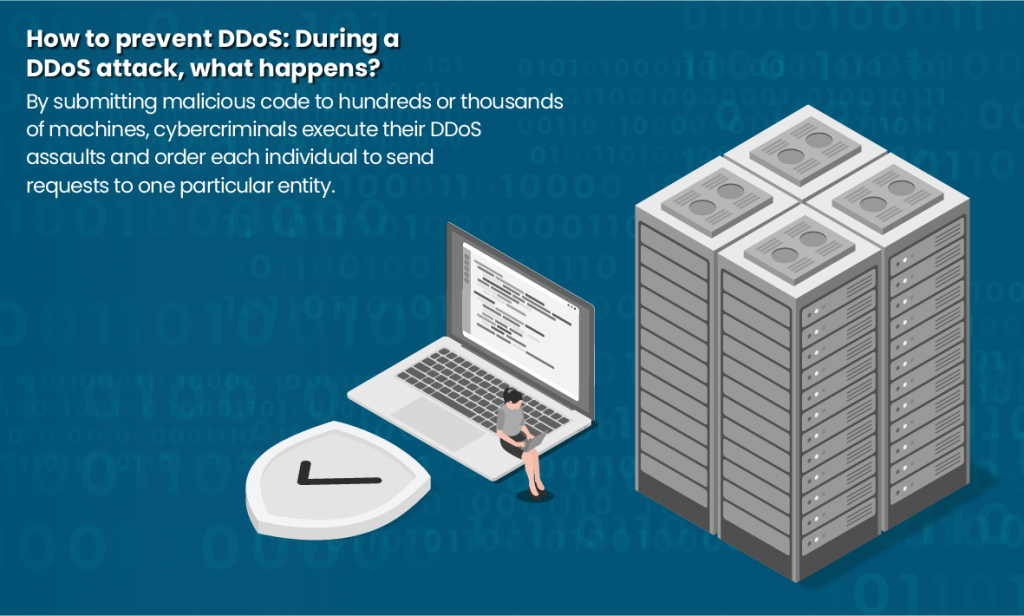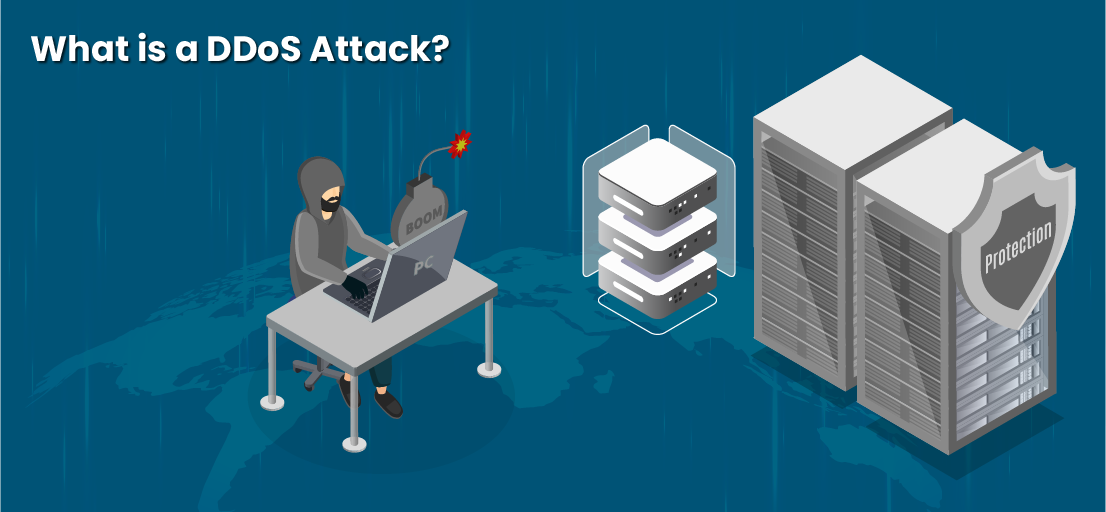What is a DDoS Attack, and How to prevent DDoS Attacks on websites?
The distributed denial of service (DDoS) attack is, as its title indicates, a security breach that disturbs browser access or network resources. Common attacks include methods like a bot that floods the network with many signals so that actual users could not access your website. Here at Grid Hosting, I will guide how to prevent DDoS attacks and other security threats in this article.
Hackers also attack vital resources, including online services and platforms often utilized by major companies, banks, governments, and schools. Many types of DDoS attacks are practiced, comprising volumetric attacks, layer amplification attacks, and protocol assaults. Since these techniques vary in how they cause damage, they can target a user on many fronts, overwhelming his technology and applications entirely.

[sc_fs_faq html=”true” headline=”h2″ img=”” question=”How to prevent DDoS: During a DDoS attack, what happens? ” img_alt=”” css_class=””] By submitting malicious code to hundreds or thousands of machines, cybercriminals execute their DDoS assaults and order each individual to send requests to one particular entity. Typically this is achieved through tools like a botnet. Without each proprietor’s knowledge, the botnet will be a network of private computers corrupted by malicious software managed as a party. [/sc_fs_faq]
What has raised the number of DDoS attacks?
You should be cautious if you are still not involved in DDoS attacks. In the past year, the volume of DDoS attacks has risen dramatically, and there is little suggestion that they will ever decrease.
“Global IT provider Neustar recorded 168 percent more DDoS attacks in the fourth quarter of 2019 than the 4th quarter of 2018. In total, the number of DDoS attacks in 2019 was 180 percent higher than in 2018. The study also considered the complete rise in the severity of attacks to be troubling figures. The major threat in 2019 was 31% higher than the biggest DDoS in 2018, at 587 Gbps a second, with 343 Mpps becoming the most attacking intensity in 2019.”
6 steps on how to prevent DDoS attacks
-
Buy extra bandwidth
The most critical measure to deter DDoS attacks is to ensure that your VPS hosting’s “DDoS-resistant” infrastructure is adequate bandwidth to cope with traffic fluctuations due to malicious operations.
How to prevent DDoS attacks on PC? In the past, DDoS attacks have been stopped by ensuring you have more space available than any attacker. But this is no longer possible with the emergence of amplification attacks. In addition, the purchase of additional bandwidth increases the level that attackers have to reach before starting an effective DDoS attack. Still, it is not an effective DDoS attack strategy to purchase extra bandwidth by itself.
-
Develop your infrastructure resilience
To make sure you manage traffic between them across different data centres with a decent load balancing scheme, an attacker will successfully initiate a DDoS attack against your servers. Where the appropriate approach is, the data centres should be located in different areas and preferably different countries.
To be genuinely competitive, it is essential to ensure that data centres are linked to multiple networks and that no evident network inefficiencies or single faults exist.
The regional and meteorological distribution of your servers would make it impossible for an attacker to target more than one component of your servers, keeping the other servers untouched and able to take in at least one additional traffic usually managed by the affected servers.
-
Configure the DDoS attack against your network hardware
You may make some quick improvements to the hardware setup to help stop a DDoS attack.
For instance, it can help avoid such DNS and latency volumetric attacks by setting your firewall or router to drop incoming ICMP packets or blocking DNS requests from outside the network (with blocking UDP port 53).
-
Deploy Hardware and Software modules Anti-DDoS
Your servers can be secured by network firewalls and by advanced firewalls, and log files are expected to be used. In addition, many hardware vendors now enable the use of DDoS protocol protection like SYN flood attacks, for example, to track how many incomplete links occur and to smooth them out as they exceed a configurable threshold value.
Any web server applications can also be applied to specific software modules to offer some features of DDoS prevention.
-
Organize a DDoS Security Appliance
Numerous security providers, including Fortinet, Check Point, Cisco, and Radware, offer devices in front of network firewalls to block DDoS attacks before they are introduced.
They use many methods, like traffic baseline and then irregular traffic blockage and traffic blocking based on established attack signatures.
The key drawback of such a method of stopping DDoS attacks is that the devices themselves are limited in their ability to manage traffic. Although high-end devices can inspect traffic at a rate of up to 80 Gbit/s, the current DDoS attacks can be a much larger range.
-
Protect DNS Server
Do not ignore, DDoS your DNS servers, and you will put your malicious actor offline. Therefore, reliability is essential on your DNS servers, and placement behind load balancers in various datacenters is also an advantage. It could also be easier for a cloud-based DNS service to deliver high latency and numerous presence points in data centres worldwide. Such programs are planned primarily to deter DDoS.
Final Thoughts
DDoS attacks were typically just annoying, but they have become a significant cyber threat. It could be very frustrating and costly if the hackers succeed in a DDoS assault on the website.
Learning how to defend yourself from DDoS assaults is vital to your business’s safety and success in today’s world. At Grid Hosting, I suggest that every company have networks and data teams with a specific plan or mechanism to help deter and react, and they should understand how to prevent DDoS.







